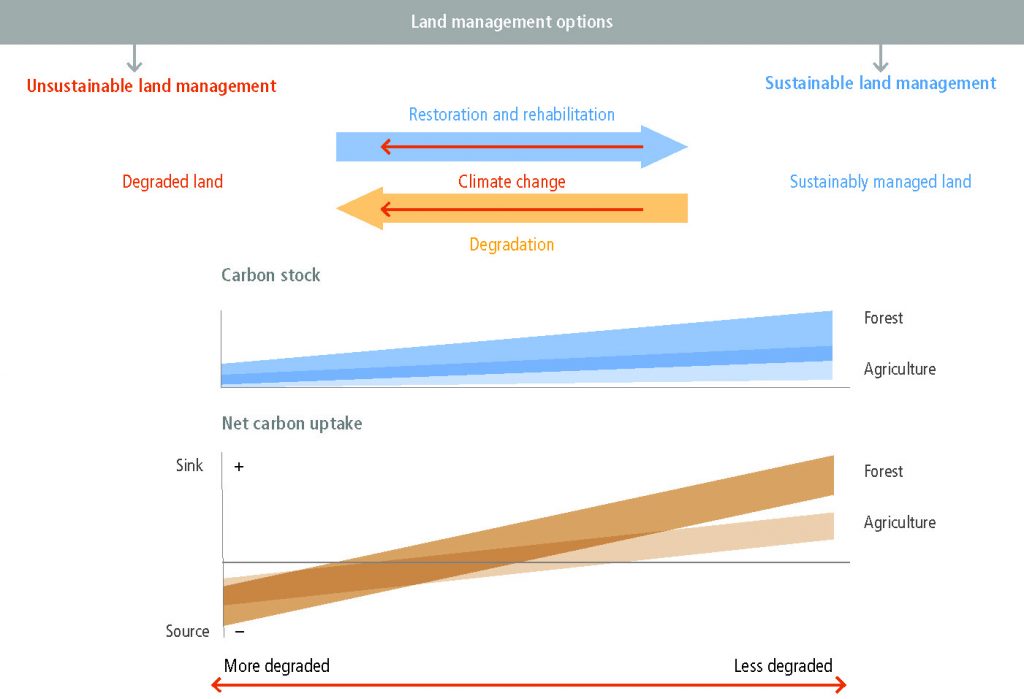
Figure 4.1
Conceptual figure illustrating that climate change impacts interact with land management to determine sustainable or degraded outcome. Climate change can exacerbate many degradation processes (Table 4.1) and introduce novel ones (e.g., permafrost thawing or biome shifts), hence management needs to respond to climate impacts in order to avoid, reduce or reverse degradation. The types and intensity of human land-use and climate change impacts on lands affect their carbon stocks and their ability to operate as carbon sinks. In managed agricultural lands, degradation typically results in reductions of soil organic carbon stocks, which also adversely affects land productivity and carbon sinks. In forest land, reduction in biomass carbon stocks alone is not necessarily an indication of a reduction in carbon sinks. Sustainably managed forest landscapes can have a lower biomass carbon density but the younger forests can have a higher growth rate, and therefore contribute stronger carbon sinks, than older forests. Ranges of carbon sinks in forest and agricultural lands are overlapping. In some cases, climate change impacts may result in increased productivity and carbon stocks, at least in the short term.